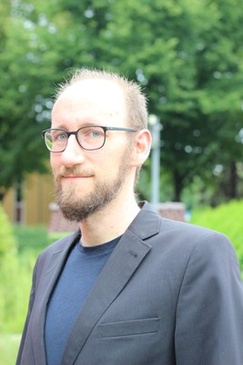Contact
14412 Potsdam
ORCID
Recent highlight publications:
Review of the complex dynamics of power grids:
This review article gathers the state of the art of the study of collective phenomena and self-organization in power grids from a theoretical physics and complexity science perspective:
- Collective nonlinear dynamics and self-organization in decentralized power grids (2022). Witthaut, D., FH, Kurths, J., Kettemann, S., Meyer-Ortmanns, H., & Timme, M.. Reviews of modern physics, 94(1), 015005.
Predicting complex dynamical properties in networked systems using Graph Neural Networks:
Traditionally, the way that network structure influences complex dynamical properties has been studied using network measures. Graph neural networks offer an alternative. We have discovered that, for stability properties motivated from power grids, GNNs generalize much better than network measures. They seem to capture the structure - function relationship in a more causal manner:
- Toward dynamic stability assessment of power grid topologies using graph neural networks (2023). Nauck, C., Lindner, M., Schürholt, K., & FH. Chaos, 33(10).
- Predicting Instability in Complex Oscillator Networks: Limitations and Potentials of Network Measures and Machine Learning (2024). Nauck, C., Lindner, M., Molkenthin, N., Kurths, J., Schöll, E., Raisch, J., & FH. arXiv
Universal dynamical equations for renewable power grids
The dynamical stability of future power grids will be provided by new actors. We provide a first principle, universal, mathematical description of their dynamics.
- Normal form for grid-forming power grid actors (2022). Kogler, R., Plietzsch, A., Schultz, P., & Hellmann, F. PRX Energy, 1(1), 013008.
- Complex Couplings - A Universal, Adaptive, and Bilinear Formulation of Power Grid Dynamics (2024). Büttner, A., & Hellmann, F. PRX Energy, 3(1), 013005.
Extreme events in complex infrastructure systems
The way a complex systems reacts to shocks is determined by the internal structure and resilience of the system. By modeling the dynamical reaction of the system at the time scale of extreme events, we can reveal the weak links in the system, that limit its resilience, and whose failure can trigger complete collapse.
- Increasing the resilience of the Texas power grid against extreme storms by hardening critical lines (2024). Stürmer, J., Plietzsch, A., Vogt, T., FH, Kurths, J., Otto, C., Frieler, K & Anvari, M. Nature Energy, 1-10.
Full list of publications:
- eKI4DS: (BMWK, provisionally approved) Explainable AI for dynamic stability assessment
- OpPoDyn (BMWK): High performance software for network and power grid simulation
- KI-FounDyn (BmBF): AI methods for predicting stability properties in complex networks
- CoCo-Hype 1+2 (DFG): "Consistent modeling, design and analysis of multi-layered hybrid power systems with distributed control" - Part of the DFG Priority Programme 1984 "Hybrid and Multimodal Energy Systems"
- CoNDyNet 2 (BmBF): - Emergent non-linear dynamics of power grids (finished)
- ExSyCoGrid (DFG-NSFC) - Generalized Synchronization for Renewable Powergrids (finished)
- Elena (Leibniz) - Software for Powergrid dynamics. Leibniz Transfer project (finished)
- open_plan (BMWK) - Designing cellular grids. (finished)
- CoNDyNet (BmBF): Collective Nonlinear Dynamics on Networks (finished)
- Model order reduction for power plant models (Climate KIC, finished)
Before joining PIK to work on renewable energies I worked in Loop Quantum Gravity. I did my PhD at the University of Nottingham and a Postdoc at the Albert Einstein Institute (MPI for Gravitational Physics) in Golm. A science slam where I presented this research can be found here.






